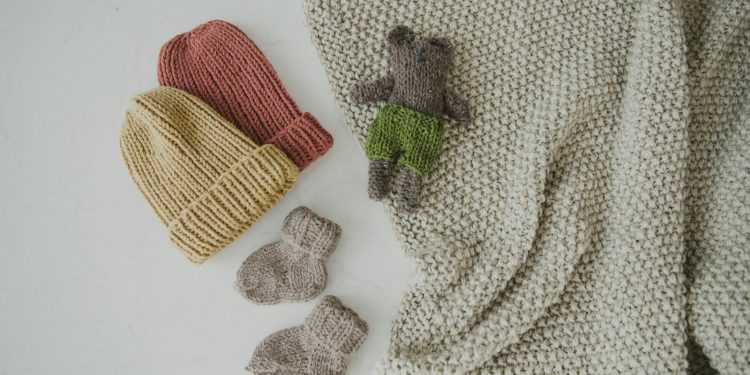As parents, we all want what’s best for our children—from their health to their future. One of the ways we can make a positive impact on both is by choosing eco-friendly baby clothes. Sustainable clothing options not only protect your baby’s delicate skin from harmful chemicals, but also contribute to a healthier planet for future generations. With increasing awareness about environmental challenges, more parents are looking to make conscientious choices when it comes to dressing their little ones. This guide will help you understand what makes baby clothing eco-friendly and how to make the best choices for your family and the environment.
1. What Makes Baby Clothes Eco-Friendly?
Eco-friendly baby clothes are garments made with sustainable materials, non-toxic dyes, and ethical production methods that minimize environmental impact. The focus is on reducing resource consumption, pollution, and waste throughout the garment’s lifecycle. Common features of eco-friendly baby clothes include:
- Organic Fabrics: Organic cotton, bamboo, and hemp are popular choices because they are grown without harmful pesticides and use less water compared to conventional farming practices.
- Non-Toxic Dyes: Conventional clothing is often treated with harsh chemicals and dyes that can irritate a baby’s sensitive skin. Eco-friendly baby clothes use non-toxic dyes that are safer for babies and the planet.
- Sustainable Production: Ethical production involves fair labor practices, waste reduction, and energy efficiency. Choosing clothes from brands that prioritize these practices ensures your purchase supports responsible production methods.
2. Benefits of Eco-Friendly Baby Clothes
Choosing eco-friendly baby clothes comes with numerous benefits for both your baby and the environment:
- Gentle on Baby’s Skin: Babies have sensitive skin that can be easily irritated by harsh chemicals found in conventional clothing. Organic fabrics are free from pesticides, harsh dyes, and toxic residues, making them gentler on your baby’s skin.
- Reduced Environmental Impact: Sustainable materials like organic cotton and bamboo are grown using fewer chemicals and less water, helping to conserve natural resources and protect wildlife.
- Durability: Eco-friendly baby clothes are often made with higher-quality materials that are built to last. This means you can use them longer or pass them down to younger siblings, reducing the need for frequent replacements.
- Ethical Practices: By supporting brands that prioritize fair labor and sustainable practices, you contribute to a better quality of life for workers in the fashion industry.
3. Choosing the Right Fabrics
When selecting eco-friendly baby clothes, the type of fabric is one of the most important factors to consider. Here are some of the best options for sustainable baby clothing:
- Organic Cotton: Organic cotton is one of the most popular choices for baby clothes. It is grown without pesticides or synthetic fertilizers, making it safer for both the environment and your baby’s skin. Organic cotton is also soft and breathable, which helps regulate your baby’s temperature and prevents skin irritation.
- Bamboo: Bamboo fabric is naturally hypoallergenic, antibacterial, and moisture-wicking, making it a great choice for baby clothes. Bamboo grows quickly without the need for pesticides, making it a highly renewable resource. The fabric is also incredibly soft, which adds to your baby’s comfort.
- Hemp: Hemp is a durable and sustainable fabric that requires minimal water and no pesticides to grow. It gets softer with every wash and is naturally resistant to mold and mildew, making it ideal for baby clothing.
- Tencel (Lyocell): Tencel is a fabric made from sustainably sourced wood pulp, often eucalyptus. It is produced using an environmentally friendly process that recycles water and solvents. Tencel is known for its silky feel and breathability, making it perfect for baby clothes.
4. Wardrobe Essentials for Your Baby
Building an eco-friendly baby wardrobe doesn’t have to be complicated. Here are some must-have items to consider when planning your baby’s sustainable wardrobe:
- Onesies: Onesies are a staple in every baby’s wardrobe, and opting for organic cotton or bamboo onesies is a great way to start your eco-friendly journey. Look for neutral colors or simple patterns to maximize versatility and reduce the number of items you need.
- Sleepers: Organic cotton or bamboo sleepers are ideal for keeping your baby cozy while being gentle on their skin. Footed sleepers can help keep your baby warm without the need for additional blankets.
- Swaddle Blankets: Swaddle blankets made from organic muslin or bamboo are soft, breathable, and perfect for keeping your baby comfortable. These blankets are also versatile and can be used as stroller covers, nursing covers, or even burp cloths.
- Leggings and Pants: Soft, stretchy pants made from sustainable fabrics like organic cotton or Tencel are great for keeping your baby comfortable while allowing for easy movement.
- Hats and Mittens: Hats and mittens made from natural materials are perfect for protecting your baby from harsh weather while ensuring their sensitive skin stays safe from irritation.
5. Tips for Shopping Eco-Friendly
Finding eco-friendly baby clothes is easier than ever, with many brands focusing on sustainability. Here are some tips to help you make the best choices:
- Look for Certifications: Certifications such as GOTS (Global Organic Textile Standard) or OEKO-TEX ensure that the clothes meet strict environmental and safety standards. Look for these labels to ensure you’re buying truly sustainable products.
- Buy Secondhand: Secondhand baby clothes are a sustainable option that reduces waste. Babies grow quickly, and many baby clothes are worn only a few times before they’re outgrown, making secondhand items often like new. Thrift stores, online marketplaces, and clothing swaps are great places to find quality secondhand clothes.
- Support Ethical Brands: Look for brands that are transparent about their production processes and prioritize fair wages, safe working conditions, and environmental responsibility. Supporting these brands helps promote a more ethical fashion industry.
- Choose Quality Over Quantity: Babies grow quickly, but investing in a smaller number of high-quality, versatile pieces can reduce waste and ensure your baby always has comfortable, stylish clothing. A well-thought-out, minimal wardrobe can be more sustainable than constantly buying new items.
6. Caring for Eco-Friendly Baby Clothes
Proper care can extend the life of your baby’s clothes, making them even more sustainable. Here are some tips for taking care of eco-friendly fabrics:
- Wash with Care: Use a gentle, eco-friendly detergent to wash baby clothes. Harsh detergents can wear out fabrics more quickly and may leave residue that irritates your baby’s skin.
- Cold Water Wash: Washing clothes in cold water helps reduce energy use and is gentler on the fabrics, which helps them last longer.
- Line Dry: Whenever possible, line dry baby clothes instead of using a dryer. Not only does this save energy, but it also helps prevent shrinking and wear on the fabric.
7. The Long-Term Impact of Sustainable Choices
Choosing eco-friendly baby clothes is more than just a short-term decision for comfort—it’s a long-term investment in the health of the planet and the future of our children. By opting for organic, sustainable fabrics, reducing waste through secondhand shopping, and supporting ethical brands, you’re setting an example for your child about the importance of caring for the environment.
The fashion industry is one of the largest polluters in the world, but collectively, we can make a difference by choosing sustainable alternatives. Every small change adds up, and by starting with your baby’s wardrobe, you’re contributing to a greener, healthier world for future generations.












